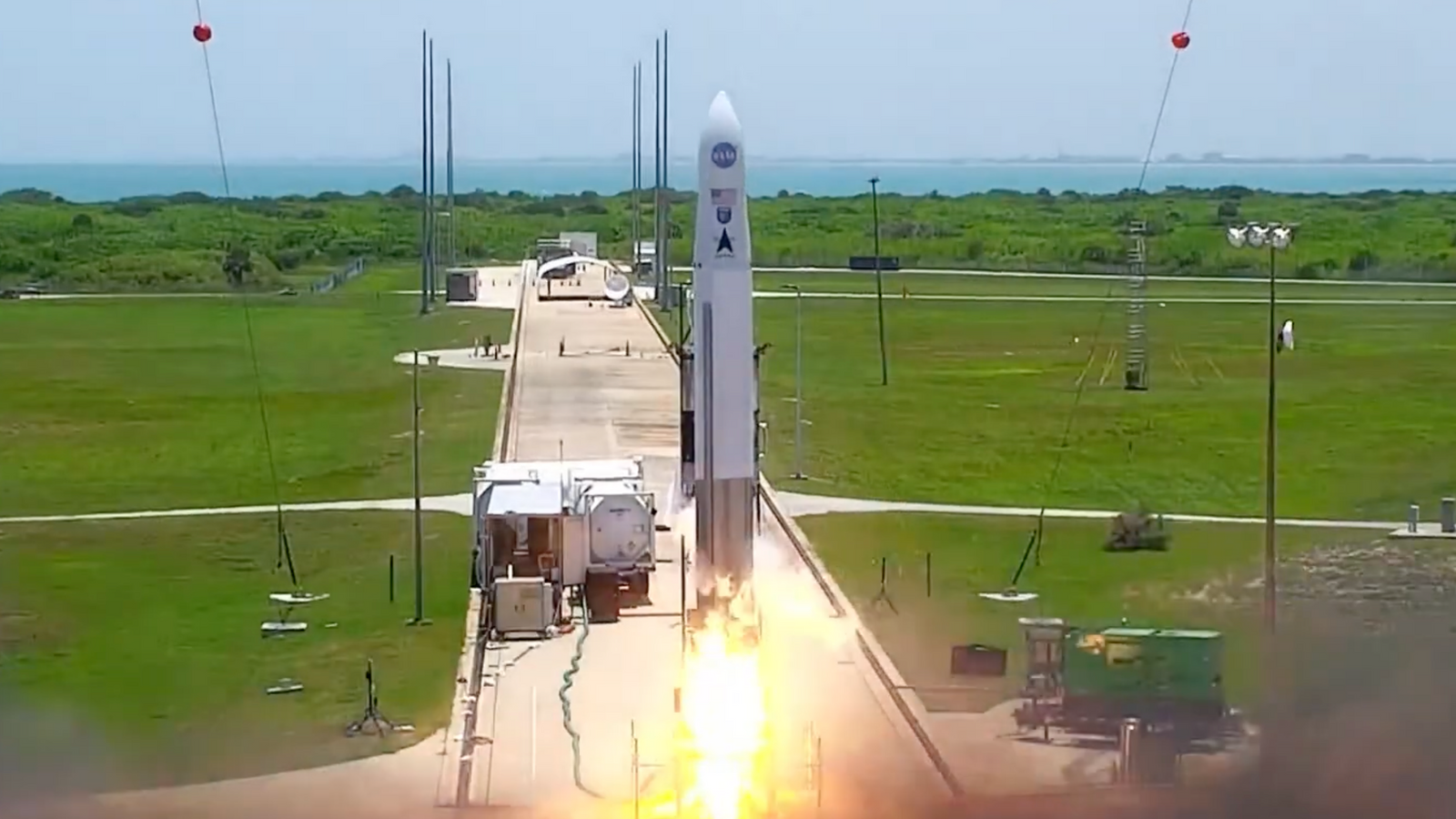NASA has lost two satellites designed to track hurricanes after the rocket carrying them malfunctioned.
The cause hasn’t yet been revealed but a livestream feed showed the Astra launch vehicle successfully lifting off from Cape Canaveral in Florida before suffering a second-stage failure hundreds of kilometres into the sky.
It is the second time that the private spaceflight company Astra has lost NASA satellites.
Back in February, its chief executive said he was “deeply sorry” after his firm accidentally destroyed four tiny NASA satellites in a failed launch.
Astra had successfully reached orbit in another launch a month after its February incident.
The two CubeSats on board Sunday’s launch, which comprised a third of a $30m mission designed to monitor dangerous weather on Earth, were both lost.
“We had a nominal first stage flight; however, the upper-stage engine did shut down early and we did not deliver our payloads to orbit,” said Amanda Dark Frye, a senior manager at Astra.
NASA assembles team of scientists to study UFOs despite facing ‘reputational risk’
The Sun: ‘Solar hedgehog’ among ‘breathtaking’ images released by European Space Agency
NASA picture of Mars ‘doorway’ spawns conspiracy theories – this is what you’re really looking at
The company tweeted its regrets over the loss of the miniature satellites.
The satellites were part of NASA’s TROPICS mission – an easy-to-say acronym standing for Time-Resolved Observations of Precipitation structure and storm Intensity with a Constellation of Smallsats.
In a statement, NASA said: “While we are disappointed in the loss of the two TROPICS CubeSats, the mission is part of NASA’s Earth venture programme, which provides opportunities for lower-cost, higher risk missions.
“Despite a loss of the first two of six satellites, the TROPICS constellation will still meet its science objectives with the four remaining CubeSats distributed in two orbits.”
“With four satellites, TROPICS will still provide improved time-resolved observations of tropical cyclones compared to traditional observing methods,” the US space agency added.
What are CubeSats?
“CubeSats are playing an increasingly larger role in exploration, technology demonstrations, scientific research, and educational investigations at NASA,” said the company.
During the pandemic, when access to NASA’s facilities was being restricted, the space agency’s staff had commanded its Hyper-Angular Rainbow Polarimeter CubeSat from home.
TROPICS is what NASA calls “an Earth venture mission” meaning it is a “science-driven, competitively selected, low-cost mission” that provided the space agency with an opportunity to invest in innovative Earth science.
February’s failed launch was carrying four small satellites as part of NASA’s ELaNa 41 (Educational Launch of Nanosatellites) mission, rather than TROPICS.
NASA describes ELaNa as “an exciting initiative… to attract and retain students in the science, technology, engineering and mathematics disciplines”.
The aim is to create tiny satellites of units measuring just 10cm cubed, although the satellites can be made up from two, three or six units – each weighing less than 1.33kg, according to NASA.
Three of the lost satellites were made by universities, while one was made by NASA’s Johnson Space Centre.
All of the CubeSats launched as part of the programme are experimental rather than commercial.






















